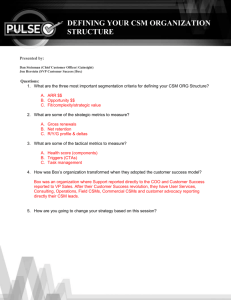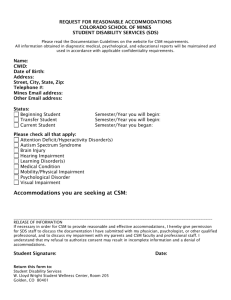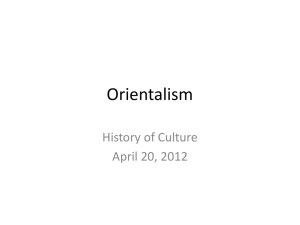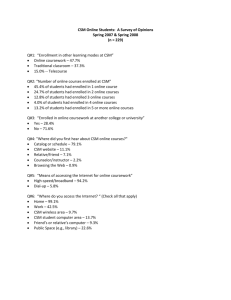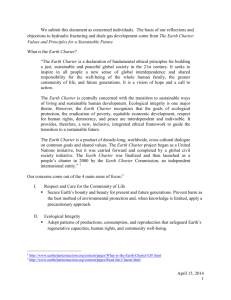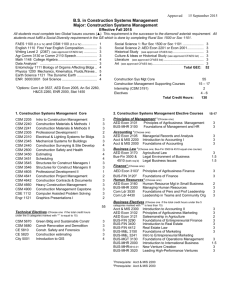EPICS 251 Projects - Spring 2014
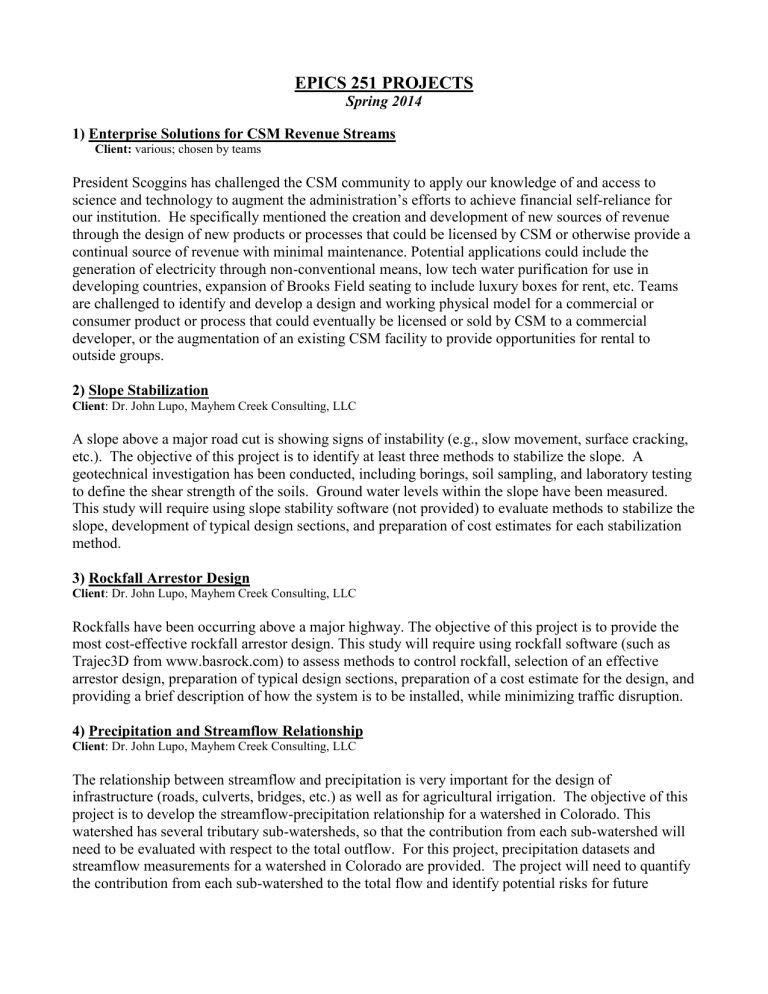
EPICS 251 PROJECTS
Spring 2014
1) Enterprise Solutions for CSM Revenue Streams
Client: various; chosen by teams
President Scoggins has challenged the CSM community to apply our knowledge of and access to science and technology to augment the administration’s efforts to achieve financial self-reliance for our institution. He specifically mentioned the creation and development of new sources of revenue through the design of new products or processes that could be licensed by CSM or otherwise provide a continual source of revenue with minimal maintenance. Potential applications could include the generation of electricity through non-conventional means, low tech water purification for use in developing countries, expansion of Brooks Field seating to include luxury boxes for rent, etc. Teams are challenged to identify and develop a design and working physical model for a commercial or consumer product or process that could eventually be licensed or sold by CSM to a commercial developer, or the augmentation of an existing CSM facility to provide opportunities for rental to outside groups.
2) Slope Stabilization
Client : Dr. John Lupo, Mayhem Creek Consulting, LLC
A slope above a major road cut is showing signs of instability (e.g., slow movement, surface cracking, etc.). The objective of this project is to identify at least three methods to stabilize the slope. A geotechnical investigation has been conducted, including borings, soil sampling, and laboratory testing to define the shear strength of the soils. Ground water levels within the slope have been measured.
This study will require using slope stability software (not provided) to evaluate methods to stabilize the slope, development of typical design sections, and preparation of cost estimates for each stabilization method.
3) Rockfall Arrestor Design
Client : Dr. John Lupo, Mayhem Creek Consulting, LLC
Rockfalls have been occurring above a major highway. The objective of this project is to provide the most cost-effective rockfall arrestor design. This study will require using rockfall software (such as
Trajec3D from www.basrock.com) to assess methods to control rockfall, selection of an effective arrestor design, preparation of typical design sections, preparation of a cost estimate for the design, and providing a brief description of how the system is to be installed, while minimizing traffic disruption.
4) Precipitation and Streamflow Relationship
Client : Dr. John Lupo, Mayhem Creek Consulting, LLC
The relationship between streamflow and precipitation is very important for the design of infrastructure (roads, culverts, bridges, etc.) as well as for agricultural irrigation. The objective of this project is to develop the streamflow-precipitation relationship for a watershed in Colorado. This watershed has several tributary sub-watersheds, so that the contribution from each sub-watershed will need to be evaluated with respect to the total outflow. For this project, precipitation datasets and streamflow measurements for a watershed in Colorado are provided. The project will need to quantify the contribution from each sub-watershed to the total flow and identify potential risks for future
infrastructure in the valley. The project will also need to determine the minimum culvert size for the stream crossing.
5) Specification of a Sterling Motor/Generator
Client : Mark Jacobi, Orient Land Trust; www.olt.org
The Orient Land Trust is a nonprofit conservation organization dedicated to the preservation of natural, agricultural and historical resources of the San Luis Valley for the enjoyment and education of present and future generations. They would like to use a Sterling Motor/Generator and need to know what size of this equipment to use to produce 1000 watts on average through one average year with at least a 40 degree F temperature differential between water and air and nocturnal/diurnal differentials.
6) Solar Desalination and Hydrogen Harvesting Device
Client : Mark Jacobi, Orient Land Trust; www.olt.org
The Orient Land Trust asks your team to design and specify a solar desalination and hydrogen harvesting device that would have the ability to harvest hydrogen directly from seawater.
7) Solar Temperature-Source Cement Kiln
Client : Mark Jacobi, Orient Land Trust; www.olt.org
The Orient Land Trust asks your team to design and specify a solar temperature-source cement production kiln to avoid the use of electricity to process their cement.
8) Semi-Portable Irrigation System for Pastures
Client : Mark Jacobi, Orient Land Trust; www.olt.org
The Orient Land Trust asks your team to design and specify a semi-portable irrigation system for their ranch pastures, whereby your solution should be low in cost, use repurposed materials and be simple to build and operate.
9) Tricone Drill Bit Characterization and Behavior
Client : Damon Gitelman, Pivot Industries
Pivot Industries is a small start-up company in Colorado specializing in the supply of high-wear equipment and supplies to the mining and oil/gas exploration industries. They are particularly interested in the use of tricone drill bits in drilling applications, and seek a study in the use of this type of equipment, including suppliers, materials behavior, wear during use, and related research topics.
10) Cart for Transporting People
Client: David Talbot, Crutches 4 Africa
David Talbot uses crutches to get around, as a result of having Post Polio Syndrome. While working in
Africa on a documentary film, he saw that there was a great need for mobility devices to enable people with polio and other disabilities to move from place to place without having to crawl on the ground.
Since that time, he has formed Crutches 4 Africa to collect and distribute crutches, wheelchairs, walkers and other devices to Africans to help them to move from place to place and therefore do more for themselves than they could otherwise. David also requests your help to make these mobility devices more comfortable and adapted to the rugged African terrain.
This project involves the design and construction of a cart that is capable of transporting a child or adult with moderate to severe mobility disabilities to and from their home over rough African terrain, using two crutches and two bicycle wheels. Additional materials may be proposed with the consent of this client. This cart must be easy to operate and maintain, very durable and low in cost. The use of repurposed materials is highly encouraged.
11) Forearm Swivel Crutch
Client: David Talbot, Crutches 4 Africa
David Talbot requests your team to adapt an existing forearm rest style crutch to incorporate a rotation system to rotate the rest apparatus and handle into a standard crutch position, and to add an extension at the posterior of the forearm rest that includes a single post, underarm support. This will allow users to be able to use this crutch in two different positions.
12) Handles for an African Walking Pole
Client: David Talbot, Crutches 4 Africa
Africans with mobility-related disabilities sometimes use walking poles for support and balance as they move from one place to another by foot. Because the poles are not a standard size, a set of adjustable handles is needed. No damage must be done to the pole, either during installation or while in use. Users may weigh up to 200 lb, and also use these poles for support while standing in one place.
13) Providing Energy Access Solutions to Rural Africa: Micro-Grid Design
Client: Nicole Davis, International Center for Appropriate and Sustainable Technologies (iCAST); www.iCAST.org
ICAST is a non-profit organization that works in partnership with other organizations to develop and implement projects fostering economic viability, environmental stewardship, and social responsibility in underserved communities. Through participation in service-learning projects, students enhance their technical and business skills while learning valuable lessons in teamwork, communications and ethics.
The purpose of this project is to evaluate the feasibility of a micro-grid design, using solar photovoltaic cells, that can cost-effectively provide power for different applications across Africa. End users include
200 homeowners and 100 farmers, both of whom will be served simultaneously. Specific aspects of this design study include, but are not limited to, the identification and evaluation of existing designs and applications, research into micro-grid technology solutions currently available, and an evaluation of the technical viability of various options for their use in Africa.
14) Providing Energy Access Solutions to Rural Africa: Project Sun-Light
Client: Nicole Davis, International Center for Appropriate and Sustainable Technologies (iCAST); www.iCAST.org
The purpose of this project is to evaluate the design and feasibility of an energy efficiency and renewable energy (EERE) solution to create a net-zero street lighting projects known as “Project Sun-
Light” for towns and cities in Africa, using high-efficiency LED lamps and solar photovoltaic (PV) cells, which can cost-effectively zero out the utility bills for towns across Africa. Both LEDs and PVs would be used simultaneously. Specific requirements include, but are not limited to, identification of designs and specific technology solutions currently available and any issues associated with their operation, technical viability of various options, and capital and operating costs and incentives pertainable to Sidi Bouzid, Tunisia.
15) Weather Station for Mines Park Area
Client: Dr. Charles Courtad, Renewable Energy Demonstration Center; Theresa Worsham, City of Golden; David
Jennings, CSM Facilities Management
The City of Golden, in conjunction with the Renewable Energy Demonstration Center and CSM
Facilities Management, seek your team’s help to design and build a weather station in the Mines Park are to provide weather data and images of the western edge of the CSM campus, to eventually coordinate with nine other weather stations in Golden to provide wireless data to both the City and
CSM. A specific site must be selected, and the weather station designed, with drawings for construction, such that it will endure severe weather conditions throughout the year, and house and protect existing weather measurement instruments and a camera. The design project will include identifying an appropriate location, understanding and installing a system, setting up a framework for analyzing data gathered, and beginning preliminary analysis. Advanced teams might also compare data between the CSM site and other City of Golden-managed sites and begin to create a wind map, for example.
16) Colorado Space Grant Consortium DemoSAT Challenge
Client: Dr.
Joel Duncan, on behalf of Colorado Space Grant Consortium; http://spacegrant.colorado.edu
The Colorado Space Grant Consortium (COSGC), in conjunction with the Jet Propulsion Laboratory
(JPL) and the Ames Research Center (Ames) challenge teams to develop a satellite model to travel to
10,000 ft during a high altitude balloon flight. The satellite must survive tough and challenging environmental conditions. Several applications are available: RoboSAT focuses on robots which will navigate without intervention from any outside source to a finishing point at the Colorado Robot
Challenge prior to flying on the balloon. SolarSAT emphasizes the collection of intensity data to support Lockheed Martin with the design of a long range balloon flight. GarageSAT addresses previous design issues for rover housings that have resulted in the failure of rover missions.
17) Modular Aquaponics Vertical Agriculture System
Client: Will Davis , Jovial Concepts; www.Jovial Concepts.org
Concerns about industrial monoculture agriculture are a topic of major debate. Our land is eroding and being depleted of nutrients, our food is being coated in toxins and produce is being genetically altered.
Food is routinely shipped thousands of miles before it is eaten. We believe one solution to these problems is through modern technology and highly efficient growing systems. Your team is requested to design an affordable and scalable closed loop aquaponic system, in which fish and organic plants live and grow together to use a natural form of fertilization and provide a highly efficient, low square footage method of local food production.
18) Continuous Use Greenhouse
Client: Will Davis, Jovial Concepts; www.Jovial Concepts.org
Local availability of food is a concern. With food being routinely shipped 1,500 to 2,500 miles from field to store, current agricultural practices result in reduced quality and nutrition, increased wasted and excessive use of fuel for transportation. Your team is requested to design an affordable and scalable greenhouse system that could be used by homeowners and also be scalable up for commercial operations. One of the key specifications is temperature control for year-round use.
19) Individual Wheelchair Brake Management
Client: David Birkle, Rehab Engineer and Jennifer Peltier, OTR, Craig Hospital, www.craighospital.org
A full design (with machine drawings) and machined prototype for a foot-operated wheel chair braking system is requested. Craig Hospital is a rehabilitation hospital specializing in the treatment of individuals who have sustained spinal cord or traumatic brain injuries. Our goal is to assist these individuals in returning to a life of quality and independence. Our projects are unique in that we expect design and machine drawings for fabrication and assembly of the product for the final presentation.
Students will receive close supervision and assistance throughout the fabrication phase. The final product will be trialed in the community by local patients and will be presented to the hospital.
20) Ozone Sensor for Dropsonde Weather Instrument
Client: Terry Hock, University Corporation for Atmospheric Research; www.ucar.edu
UCAR provides services to and promotes partnerships in a collaborative community of researchers and educators who are dedicated to understanding the atmosphere—the air around us—and the complex processes that make up the Earth system, from the ocean floor to the Sun's core. UCAR manages the
National Center for Atmospheric Research and the UCAR Community Programs on behalf of the
National Science Foundation and the university community. The goal of this project is to develop an ozone sensor that can fit into a Dropsonde weather instrument, the latter intended to measure pressure, temperature, humidity and wind speed/direction. The Dropsonde is similar to a DemoSAT demonstration satellite in that it is deployed by aircraft at altitudes of 10,000-60,000 feet, and takes measurements as it descends to earth. However, it only measures 16 inches long and 2-3.4 inches in diameter, and the ozone sensor must fit inside it. Note: PARTS WILL BE SUPPLIED BY CLIENT.
21) Development of a Software-Designed Radio
Client: Terry Hock, University Corporation for Atmospheric Research; www.ucar.edu
This project is to develop a radio receiver for processing signals from a weather instrument call a
Dropsonde. A Dropsonde is a device that is 1.75” in Diameter, 11” length and a mass of 150 grams.
Dropsondes are released from aircraft worldwide typically into hurricanes. As the Dropsonde descends it measures pressure, temperature, humidity and winds every 0.5 seconds. The data collected provides a profile of the atmosphere from the height of the aircraft to the ocean surface. Dropsondes are released from multiple types of aircraft (P-3, G-4, G-5, C-130, Global Hawk) all flying at different altitudes and speeds. For the G-4 and G-5, the release altitude is ~45,000 feet and the plane is traveling at ~450 knots, the typical fall time is 16 minutes and the fall rate is 35 m/s at ~45,000 ft to 11 m/s at sea surface. The sensor data in the sonde is telemetered to the aircraft with a direct RF UHF link. In the aircraft the data system receives the RF signal and processes it displaying the sensor data real-time on the computer screen.
22) Calibration System for an Infrared Temperature Sensor
Client: Terry Hock, University Corporation for Atmospheric Research; www.ucar.edu
This project is to develop a calibration system for an infrared temperature sensor used on an instrument called a Dropsonde (see description above). A new sensor has been integrated into the Dropsonde to measure sea surface skin temperature using a downward looking Infrared temperature sensor.
23) Study Lamp for Primary & Secondary School Students of Africa
Client : Mike Kmita, The Invictus Initiative; www.theinvictus.org
The Invictus Initiative wants to explore a project that could help the primary and secondary school students of Uluthe Mungao have the ability to study after the sun sets. Teams should explore technologies that can provide a stable source of light, and/or generate electricity which can be converted into power storage which, when connected to a light source, can provide reliable power.
Teams are encouraged to focus on design restrictions imposed by environment, safety concerns, physical space, aesthetics, cost, durability and practicality. In essence, the design and product must combine both functional and renewable components to be successful.
24) New Technologies in Prosthetic Devices
Client : Mike Kmita, The Invictus Initiative; www.theinvictus.org
With a high number of disabilities, the orphans of Small Home Orphanage struggle to adapt old/secondhand prosthetic devices and mobility aids to the needs of its recipients. Oftentimes these children have to make do with what they have available, resulting in less than comfortable or practical outcomes in the quality of overall life. The Invictus Initiative would like to challenge engineering students to identify the most common devices used for the most common health conditions encountered within Uluthe Mungao, and develop cost effective technology that will allow prosthetic devices and mobility aids to become more versatile, allowing for sustainable reusability.
25) Sustainable Bridge Design
Client : Mike Kmita, The Invictus Initiative; www.theinvictus.org
The Invictus Initiative would like to challenge engineering students to apply their knowledge of and access to science and technology to augment the current bridge design used in the Hawagaya community of Kenya. Teams should explore materials and building techniques that are available in this third world community and apply those accordingly to develop plans which will be used to construct proposed bridge during the upcoming summer of 2014 Invictus Initiative trip. Additionally, teams are encouraged to get an understanding of daily uses of the Hawagaya bridge, and after assessing community needs, identify a suitable structural design that will last the maximum amount of time with minimal maintenance and upkeep.
26) GIS Map of 11 Kenyan Villages and Critical Points
Client : Mike Kmita, The Invictus Initiative; www.theinvictus.org
The Invictus Initiative would like to challenge engineering students to apply their knowledge of and access to the applicable technology to create a map for villages located in western Kenya. The area of interest in Kenya has never been mapped before. The residents of the area need to understand what and who is around them. This will benefit business entreprenurship, travel, trade within villages, sharing of local resources, and knowledge transfer. Raw gpx data was collected on the last expedition to Kenya.
We need a dynamic team to use commercial software to interpret the data and formulate a map with points of interests to deliver to the Kenyan people.
27) Enterprise Solutions for Orphan Entrepreneurs (business)
Client : Mike Kmita, The Invictus Initiative; www.theinvictus.org
The Invictus Initiative would like to challenge the CSM community to apply our knowledge of and access to science and technology to augment the entrepreneurial efforts of the Small Home Orphanage in Uluthe Mungao to achieve financial self-reliance individually and as a community. Teams should explore programs and outlets that could expose the products/goods produced by the orphans at the small home (i.e. bracelets, baskets, vegetables grown in the community garden, etc.) to consumers in
broader markets locally and internationally. Additionally, teams are encouraged to get an understanding of the Uluthe Mungao business environment, and after researching the local goods and services exchanged, identify or develop new products and/or services that the Small Home Orphanage can utilize and incorporate within their overall revenue generating/sustaining strategy.
28) Continuous Use Greenhouse
Client : Will Davis, Jovial Concepts; info@jovialconcepts.org; www.JovialConcepts.org
The issues with current industrial agriculture practices have become a topic of debate and locality independence is becoming more of a concern. With the average distance of travel for produce ranging from 1,500 to 2,500 miles from field to store, current practices result in reduced quality, increased waste and the use of unnecessary resources for extended transit. Your team is requested to design an affordable and scalable greenhouse system that could be used by homeowners and also be scalable for commercial operations. One of the key specifications is temperature control for year-round use.
29) Modular Aquaponic Vertical Agriculture System
Client : Will Davis, Jovial Concepts; info@jovialconcepts.org; www.JovialConcepts.org
As land is eroding, food is being coated in toxins, and produce is being “engineered” to compensate for the thousands of miles it must be transported. One potential solution to these issues is through modern technology and highly efficient growing systems that work with the biology of nature. Your team is requested to design an affordable and scalable closed loop aquaponic system, wherein fish and organic plants can live and work together to use a natural form of fertilization and provide a highly efficient method of maximizing square footage for plant and fish production.
30) Updating Archimedes: Stream Powered Irrigation Pump for Developing Countries
Client: Dirk Long, Current Pumps, LLC
Current Pumps, LLC is committed to implementing affordable technology tailored to the needs of subsistence farmers in water-scarce countries. Your team is requested to develop a stream-powered pump design based on a spiral pumping mechanism that would be applicable and affordable for subsistence farmers in developing countries. An additional challenge is that the pumps must be easily manufactured in developing countries with locally available materials and techniques.
